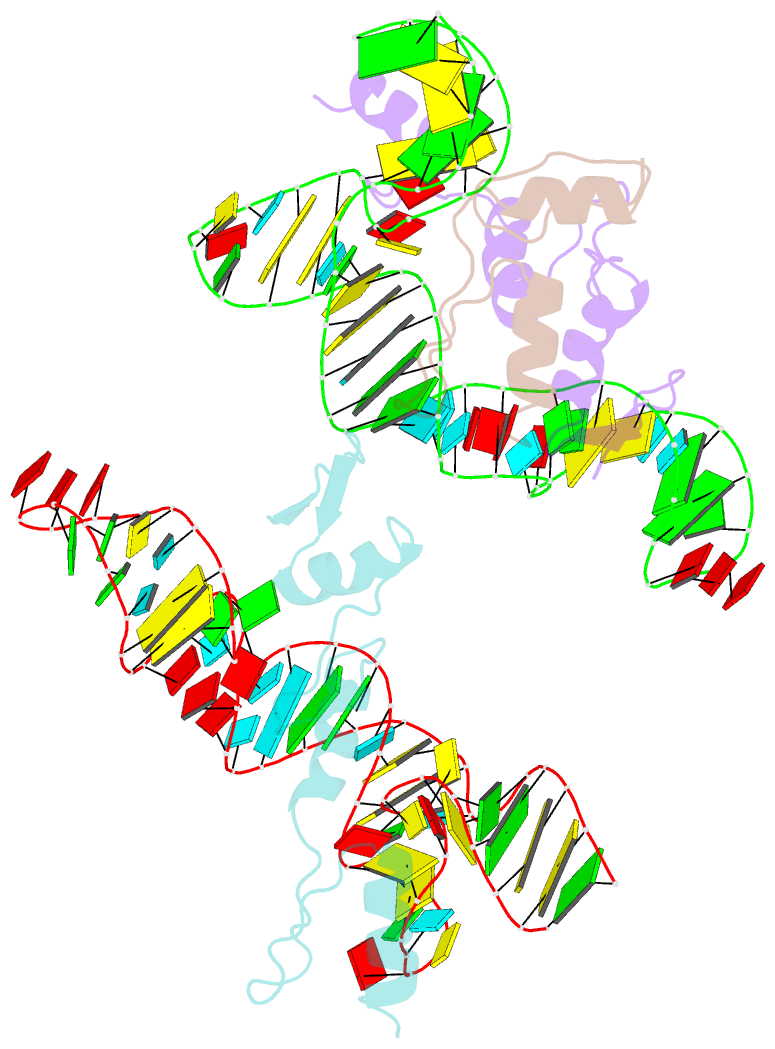Summary information and primary citation
- PDB-id
- 1un6; SNAP-derived features in text and JSON formats;
DNAproDB
- Class
- RNA-binding protein-RNA
- Method
- X-ray (3.1 Å)
- Summary
- The crystal structure of a zinc finger - RNA complex reveals two modes of molecular recognition
- Reference
- Lu D, Searles MA, Klug A (2003): "Crystal Structure of a Zinc-Finger-RNA Complex Reveals Two Modes of Molecular Recognition." Nature, 426, 96. doi: 10.1038/NATURE02088.
- Abstract
- Zinc-finger proteins of the classical Cys2His2 type are the most frequently used class of transcription factor and account for about 3% of genes in the human genome. The zinc-finger motif was discovered during biochemical studies on the transcription factor TFIIIA, which regulates the 5S ribosomal RNA genes of Xenopus laevis. Zinc-fingers mostly interact with DNA, but TFIIIA binds not only specifically to the promoter DNA, but also to 5S RNA itself. Increasing evidence indicates that zinc-fingers are more widely used to recognize RNA. There have been numerous structural studies on DNA binding, but none on RNA binding by zinc-finger proteins. Here we report the crystal structure of a three-finger complex with 61 bases of RNA, derived from the central regions of the complete nine-finger TFIIIA-5S RNA complex. The structure reveals two modes of zinc-finger binding, both of which differ from that in common use for DNA: first, the zinc-fingers interact with the backbone of a double helix; and second, the zinc-fingers specifically recognize individual bases positioned for access in otherwise intricately folded 'loop' regions of the RNA.





